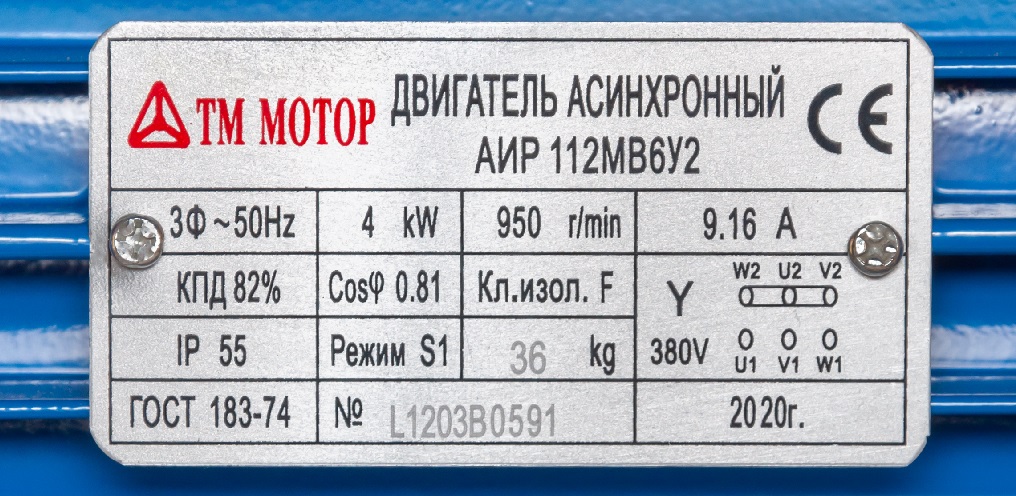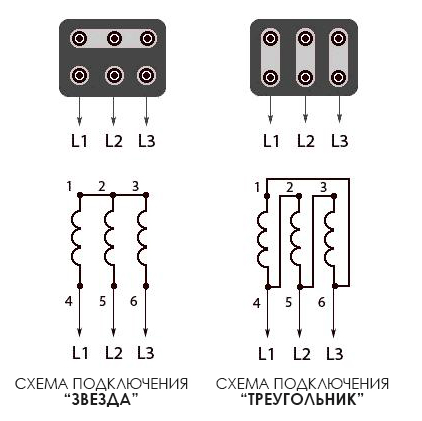Information on the engine plate
Question: How can I find out the engine characteristics? Answer: look at the plate. What do the characteristics on the electric motor plate mean? Let's figure it out.
Let's take a closer look at the question of what data is indicated on the engine plate...

One of the main characteristics on the engine plate (or nameplate, as it is also called) is the engine power.
Since the mechanism into which you will assemble the electric motor and the electric motor itself must match each other not only in overall and connecting dimensions, but also in power.
So, if you install an electric motor with insufficient power, there is a high chance that the mechanism will not work or the electric motor itself will simply burn out.
Power is specified in kilowatts or, more rarely, in horsepower. If one of your electric motors is indicated in horsepower and the other in kilowatts, you can compare these characteristics using our formula:
1 kW = 1.36 hp
1 hp = 0.73 kW
The next most important indicator is the rotational speed (or more correctly, the rotational speed of the stator magnetic field).
Standard are 3000 rpm, 1500 rpm, 1000 rpm, 750 rpm. Electric motors with 600 rpm are less common.
At the same time, on the nameplates of different motors, the user can notice that the speed is indicated as 2850 instead of 3000; 1480 instead of 1500, etc. Why is this so?
Just different manufacturers, under the speed of rotation per minute indicate the speed of rotation of the magnetic field of the stator, and it, as we know is 3000, 1500, 1000 revolutions, etc.
Others, however, indicate the speed of rotation of the rotor of the electric motor. In asynchronous motors, the speed of rotation of the magnetic field of the stator and the speed of rotation of the shaft does not coincide. At idle, with no load on the shaft, the rotational speed of the rotor of the electric machine approaches the rotational speed of the stator magnetic field.
When the shaft is loaded, the rotor speed decreases slightly and corresponds to the values that some manufacturers indicate on the nameplate.
The following formula n=60f/r rpm is used to calculate the rotation speed of the magnetic field,
where f - frequency of current (Hz)
p - number of pole pairs
If the current frequency f=50Hz (standard for Ukraine), then the relationship between the number of pole pairs "p" and the speed of the rotating magnetic field "n" is expressed as follows:
n=3000/p rpm
Another characteristic that is indicated on the nameplate is the rated current of the electric motor.
The rated current of a three-phase electric motor "I" is calculated by the formula:
I=1000P/1.73U*n*cos φ (Ampere)
Where:
P - rated motor power;
U - nominal voltage of the motor;
n - nominal efficiency factor;
cos φ - nominal power factor of the motor
Also, the plate shows the connection diagram of the electric motor to the network (in other words, the connection of phases in a three-phase winding).

If the motor is made for two voltages (220/380 or 380/660), the winding phases are connected in delta when connected to the network with lower voltage, and when connected to the network with higher voltage, the winding phases are connected in star.
For example, if the motor is designed for 220/380 V, then to connect it to a 220 V network, the winding phases must be connected in delta, and when connected to a 380 V network - in star.
Other characteristics (weight, date of manufacture, etc.) are also very important and we advise you to familiarize yourself with them.
In fact, the nameplate (nameplate) of the induction motor is its passport, which contains all the important information for the person who will connect and operate it.

